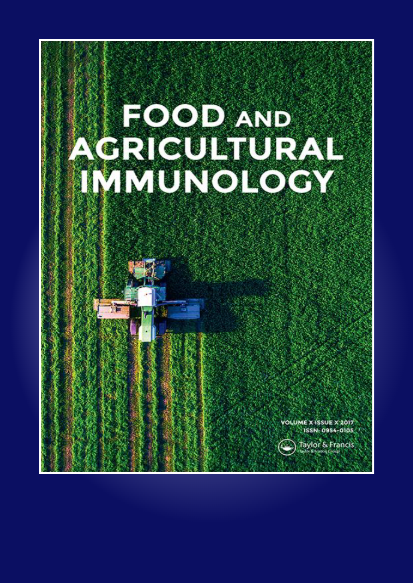长叶芡实和野芡实体外培养物及其成分的抗炎特性评价
IF 2.1
3区 农林科学
Q3 CHEMISTRY, APPLIED
引用次数: 4
摘要
长叶Eurycoma longifolia Jack (EL)已被用于治疗勃起功能障碍,其中炎症起主要作用。EL组织培养可以克服材料的不足;然而,这种培养物的抗炎特性尚未被研究。在此,我们评估了EL及其相关物种Eurycoma harmandiana Pierre (EH)的根和愈伤组织培养物对脂多糖激活的RAW 264.7细胞的抗炎作用。芡实内酯和9-甲氧基cantin -6- 1是EL愈伤组织的主要成分。EL根培养中Eurycomanone含量为0.283 mg/g,完整根中Eurycomanone含量为0.348 mg/g。根提取物和愈伤组织培养物显著抑制一氧化氮的产生,抑制iNOS、IL-6和COX-2基因的表达。总体而言,EH和EL的组织培养产生了eurycomanone, chaparinone, eurycomalactone, 9-羟基cantin -6-one, cantin -6-one和9-甲氧基cantin -6-one,具有抗炎作用。这些组织培养物可能是抗炎症有效成分的有价值和可持续的来源。本文章由计算机程序翻译,如有差异,请以英文原文为准。
Evaluation of anti-inflammatory properties of Eurycoma longifolia Jack and Eurycoma harmandiana Pierre in vitro cultures and their constituents
ABSTRACT Eurycoma longifolia Jack (EL) has been used for treating erectile dysfunction, in which inflammation plays a major role. EL tissue cultures can overcome the shortage of material; however, the anti-inflammatory property of such cultures has not been investigated. Herein, we evaluated the anti-inflammatory effects of root and callus cultures of EL and of a related species, Eurycoma harmandiana Pierre (EH), on lipopolysaccharide-activated RAW 264.7 cells. Eurycomalactone and 9-methoxycanthin-6-one were the predominant compounds in EL calli. Eurycomanone content was 0.283 mg/g in EL root culture and 0.348 mg/g in intact roots. The extracts of the root and callus cultures significantly inhibited nitric oxide production, and inhibited the expression of iNOS, IL-6, and COX-2 genes. Overall, the tissue cultures of EH and EL produced eurycomanone, chaparinone, eurycomalactone, 9-hydroxycanthin-6-one, canthin-6-one, and 9-methoxycanthin-6-one, which exhibited anti-inflammatory effects. These tissue cultures may be a valuable and sustainable source of active ingredients effective against inflammatory conditions.
求助全文
通过发布文献求助,成功后即可免费获取论文全文。
去求助
来源期刊

Food and Agricultural Immunology
农林科学-毒理学
CiteScore
5.30
自引率
6.70%
发文量
52
审稿时长
2 months
期刊介绍:
Food and Agricultural Immunology is an international open access journal publishing original immunological research with applications in food, agricultural, environmental and veterinary science. Submissions describing the use of immunological techniques and methods are particularly welcomed.
The journal aims to expand our understanding of the interactions at the interface of food and immune systems including studies on:
-Development of diagnostic systems – all types of ligand-based assays, e.g. antibody, aptamer
-Application of ligand-based assays for the detection or identification of molecules of interest in food science, agricultural research, veterinary investigations and clinical systems relating to food allergy or sensitivity to agricultural chemicals
-Effects of food on the immune system
-Studies on allergy and allergic reactions
-Investigations into food allergies
-Development of allergen-free food systems
-Development of novel assay formats
-Applications of assay systems to the monitoring of food items in relation to safety and labelling
-Food quality issues, e.g. speciation, adulteration and contamination
-Comparisons between different analytical techniques
The journal publishes research and review articles and is essential reading for food scientists, immunologists and all those concerned with the interaction between food and immune systems.
 求助内容:
求助内容: 应助结果提醒方式:
应助结果提醒方式:


